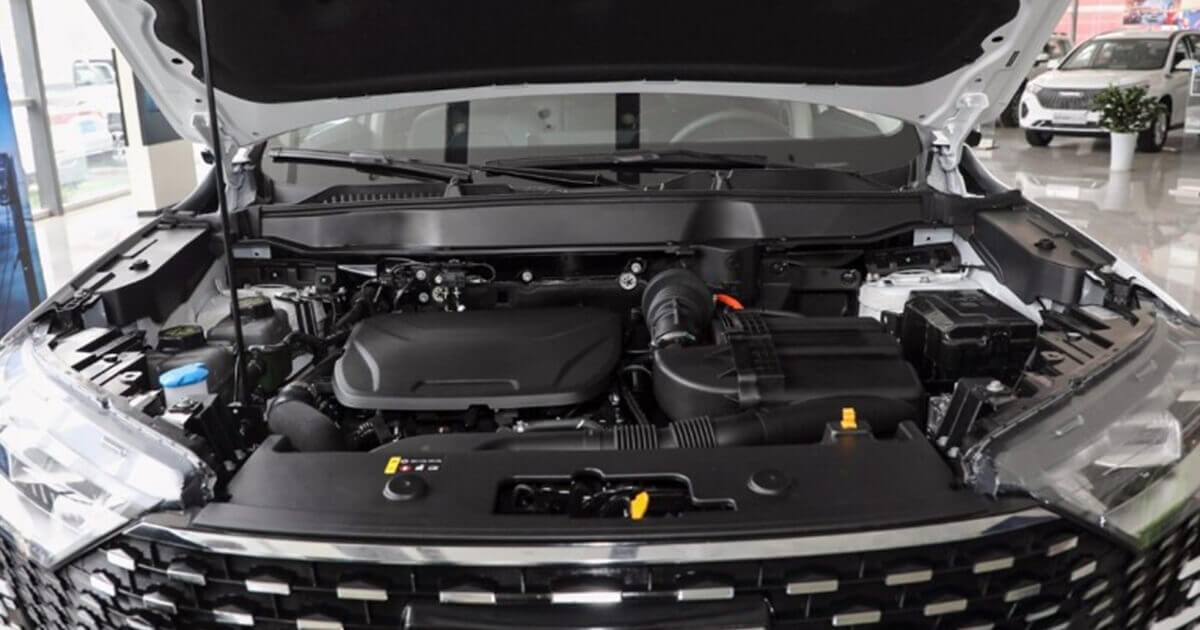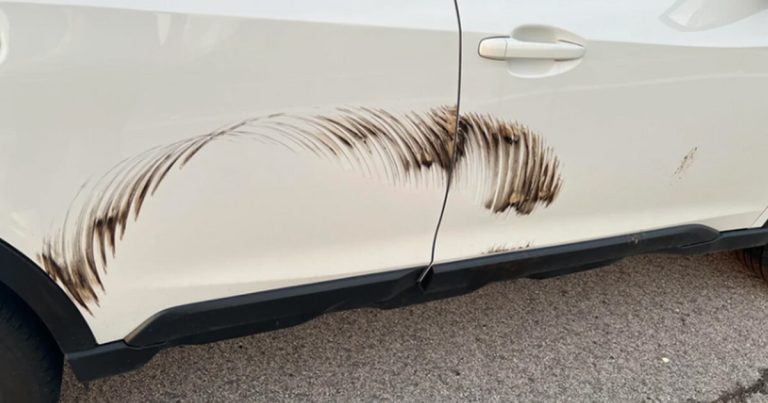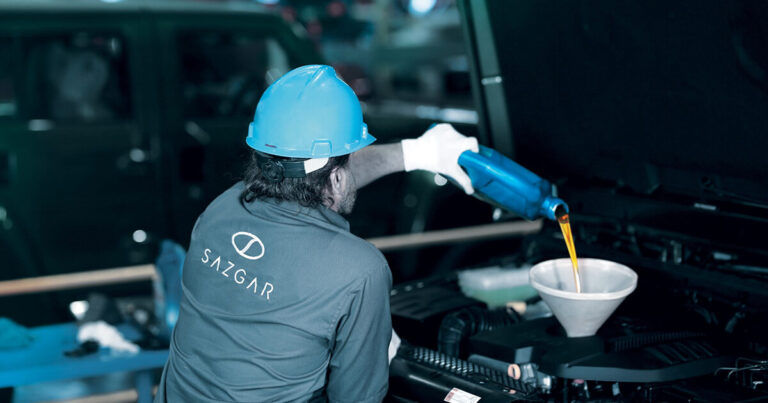A car’s engine is indeed a masterpiece of engineering. It combines precision, power, and technology to transform fuel into energy. That cranks the motion powering our daily lives. Under the hood lies a unique world of car engine parts that work in perfect sync to ensure the car:
- Performs smoothly.
- Provides efficiency.
- Ensures the engine’s longevity.
What makes this complex system tick? Starting from pistons and crankshafts to camshaft pulleys, differentials, and turbochargers, all of a car’s engine parts (including the parts of an internal combustion engine) play a role in keeping the motor working.
Whether you are a first-time car owner, a seasoned car owner, or an enthusiast with a love for the finest automobiles in life, you are in luck. This article provides a brief overview of the various components that power an automobile’s engine, which is a much-appreciated feature.
Understanding a car’s engine – the different parts that make it run
In its fundamental sense, a car engine is a machine designed to convert the energy in fuel into mechanical energy, i.e., to propel the vehicle forward. The transformation takes place through a process known as internal combustion. It burns the fuel inside the engine to create power.
Modern engines are a blessing and a marvel of precision. They are built tough to deliver fuel efficiency, performance, and low emissions. All of this is accomplished under extreme pressure and high temperatures.
Regardless of whether it is a four-cylinder engine in a compact automobile or a turbocharged V8 in a sports car, the ultimate purpose of a car’s engine is to create motion from combustion.
The modus operandi of a car’s engine: How does it work?
Fundamentally speaking, a car’s engine is an energy converter. This means that it takes fuel, mixes it with air, ignites the mixture, powers all the engine parts, and converts the resulting energy into mechanical motion that propels the vehicle forward. How does the process happen? Here are the steps detailing the functions in a repeating series of events known as the four-stroke cycle:
- The Intake Stroke: Once the intake valve opens and the piston moves downward, a mixture of air and fuel enters the cylinder.
- The Compression Stroke: The intake valve closes as the piston moves back up. This compresses the air-fuel mixture in a tiny space. This compression raises the mixture’s potential energy, and the ignition stage is hence set.
- The Power Stroke: The spark plug uses a spark to ignite the compressed mixture. It causes a minor explosion-like phenomenon, producing a force that pushes the piston downward. The result is power generated to turn the crankshaft.
- The Exhaust Stroke: The exhaust valve opens, and the piston returns to its top position. It expels the burnt gases through the exhaust manifold and out of the exhaust pipe.
As slow as it sounds, the cycle repeats itself hundreds of times per minute. It produces the rotational motion that powers the wheels via the drivetrain. Supporting components, such as the camshaft, cooling system, and timing belt, ensure the engine runs efficiently and seamlessly. It maintains the perfect balance of airflow, heat, and timing.
The list of car engine parts that make a car go vroom
We will list the complete components of a car’s engine, along with the names of each part. This will help us gain a better understanding of how each part contributes to a vehicle running seamlessly and adequately without hindrance.
| Kind of Component | Parts |
|---|---|
| Core Parts | Cylinder Head, Engine Block, Camshaft, Crankshaft, Pistons, and Combustion Chamber. |
| Timing System | Camshaft Pulley, Timing Belt, and Timing Belt Drive Pulley. |
| Valves & Manifolds | Engine valves, exhaust manifold, intake manifold, and exhaust valves. |
| Ignition System | The Distributor, Its O-Ring, and Spark Plugs. |
| Connecting Components | Cam, Connecting Rod, Flywheel, Gudgeon Pin, and Piston Ring. |
| Lining and Sealing | Cylinder Liner, Cylinder Head Cover, Head Gasket, and Rubber Grommet. |
| Lubricant System | Oil Pan, Oil Filter, Oil Pump, and Oil Pan Drain Bolt. |
| Cooling System | Coolant Hoses, Radiator, Radiator Fan, and Thermostat. |
| Air & Fuel System | Air Filter, Fuel Injector, Fuel Pump, Fuel Rail, Fuel Tank, and Throttle Body. |
| Exhaust System | Exhaust Pipe, Oxygen Sensor, Catalytic Converter, EGR Valve, and Muffler. |
| Braking System | The Brake Lines, calipers, pads, & pedal, plus the Master Cylinder and Rotors (Discs). |
| Turbocharging | Supercharger and Turbocharger. |
| Electrical System | Starter Motor. |
| Sensors | Knock Sensor and PCV Valve. |
| Mounting Parts | Engine Mounts. |
| Transmission System | Clutch (Manual), Torque Converter (Automatic), Gear Sets, Planetary Gears, and Gear Oil (Transmission Fluid). |
Now we will describe essential engine parts and name some Engine spare parts names.
Engine (The Vehicle’s Heart)
The engine has parts that burn fuel and pump air to create motion. The process is known as internal combustion. In the process, the pistons compress both air and fuel, igniting them, and converting the resulting combustion into mechanical energy.
Engines differ in their configurations, available as inline, V6, V8, electric, hybrid, and turbocharged variants. Electric cars utilize electric motors powered by batteries instead of internal combustion.
Here are some common engine problems often fixed by mechanics and specialists:
- Loss of Power.
- Misfiring.
- Oil Leakers.
- Overheating.
Transmission (The car’s power control and speed maker)
The transmission sends power from the engine to the wheels. It ensures the engine runs at a very efficient RPM at each speed. There are two main kinds of car transmissions, namely:
- Manual (Where car drivers can change gears).
- Automatic (the car changes gears for them).
Lack of a working car transmission (or problems in it) results in the following:
- Jerking in shifts.
- Transmission Fluid Leakage.
- Delays in acceleration.
Battery (the car’s power bank)
The car is a gigantic paperweight without a proper working battery. It not only starts but also powers both the engine and associated electronics. Plus, it stabilizes voltage.
Here are some common battery issues:
- Dead Battery (the car makes a clicking sound).
- Battery body corrosion.
- Leakage or swelling.
Alternator (it helps keep the power flowing)
The alternator takes over once the engine begins to run. It powers the lights, dashboard, and stereo system, and also recharges the battery.
This is what happens when the alternator fails:
- The battery light appears.
- Headlights and other lights become dim.
- Electrical problems.
- The car dies during the drive.
The cooling systems and Radiator
In all honesty, running engines have sweltering hot temperatures. The radiator keeps things cool by circulating coolant (antifreeze) between the engine and the radiator.
The Fuel System
The fuel system ensures the engine receives the correct amount of fuel and air mixture for optimal combustion. From tank to combustion, it carries the right amount of fuel.
Here are the symptoms of issues with the fuel system:
- Difficulty in starting the car.
- Engine Misfiring.
- A bad fuel economy.
- Unusual odor (like raw fuel).
Sensors (The vehicle’s digital nerve system)
Modern-day vehicles come equipped with more than 50 sensors. They all feed data to the Electronic Control Unit (ECU). Here are some common kinds of sensors:
- Oxygen Sensor (O2 Sensor): Controls the fuel-air ratio.
- MAF (Mass Air Flow): Properly measures incoming air.
- MAP (Manifold Pressure): It helps calculate engine load correctly.
- ABS Sensor: Prevents the wheels from locking up unnecessarily.
- TPS (Throttle Position): Tracks accelerator input.
- TPMS (Tire Pressure Monitoring System): Alerts if tire pressure is low.
Over to You
Under your car’s hood is a wide array of parts that help take the car out on a ride. These parts function effectively at high temperatures, but they also feature cooling systems that help regulate their temperature while in operation. Moreover, they endure wear and tear when in use and are replaceable. The better the quality, the longer the engine’s life.




